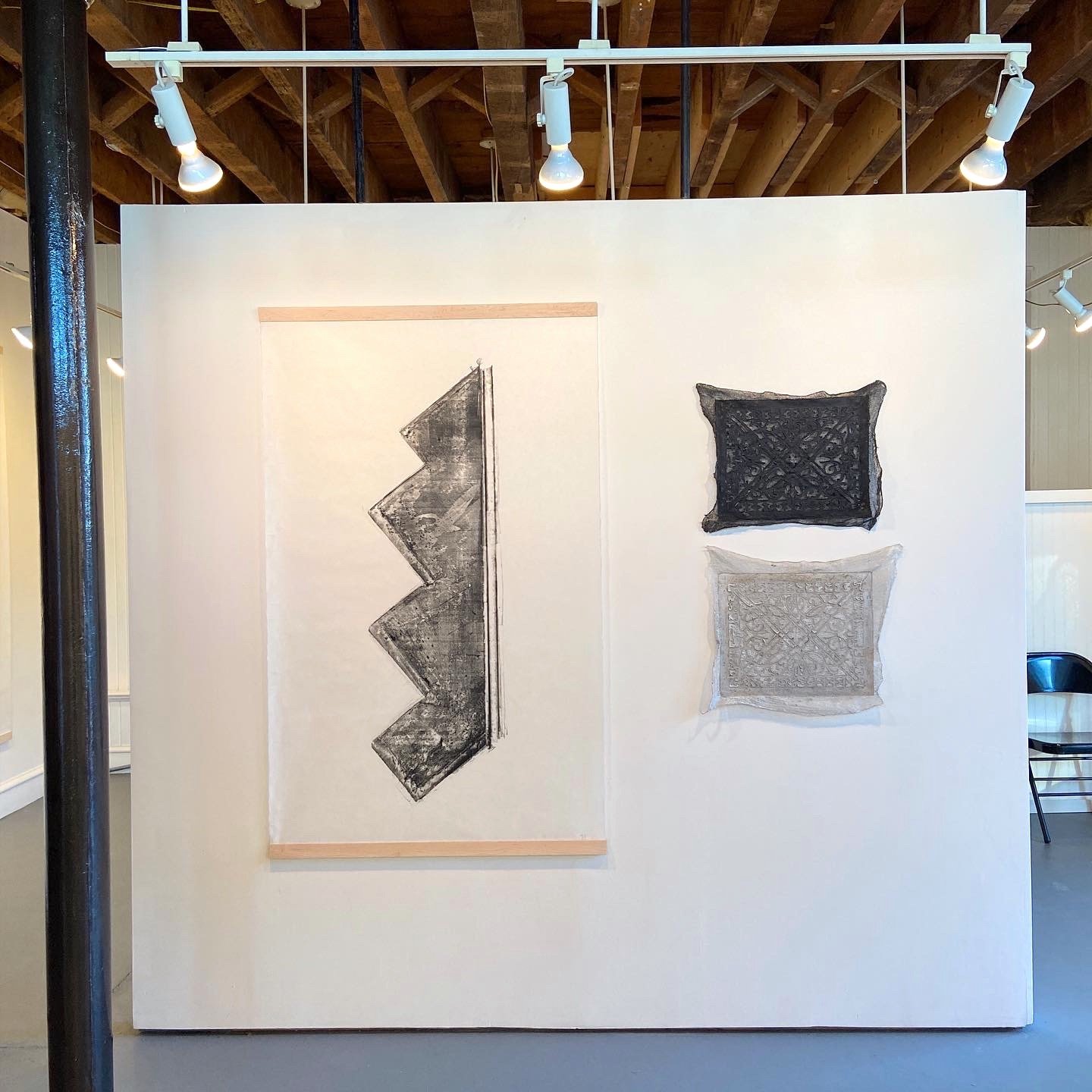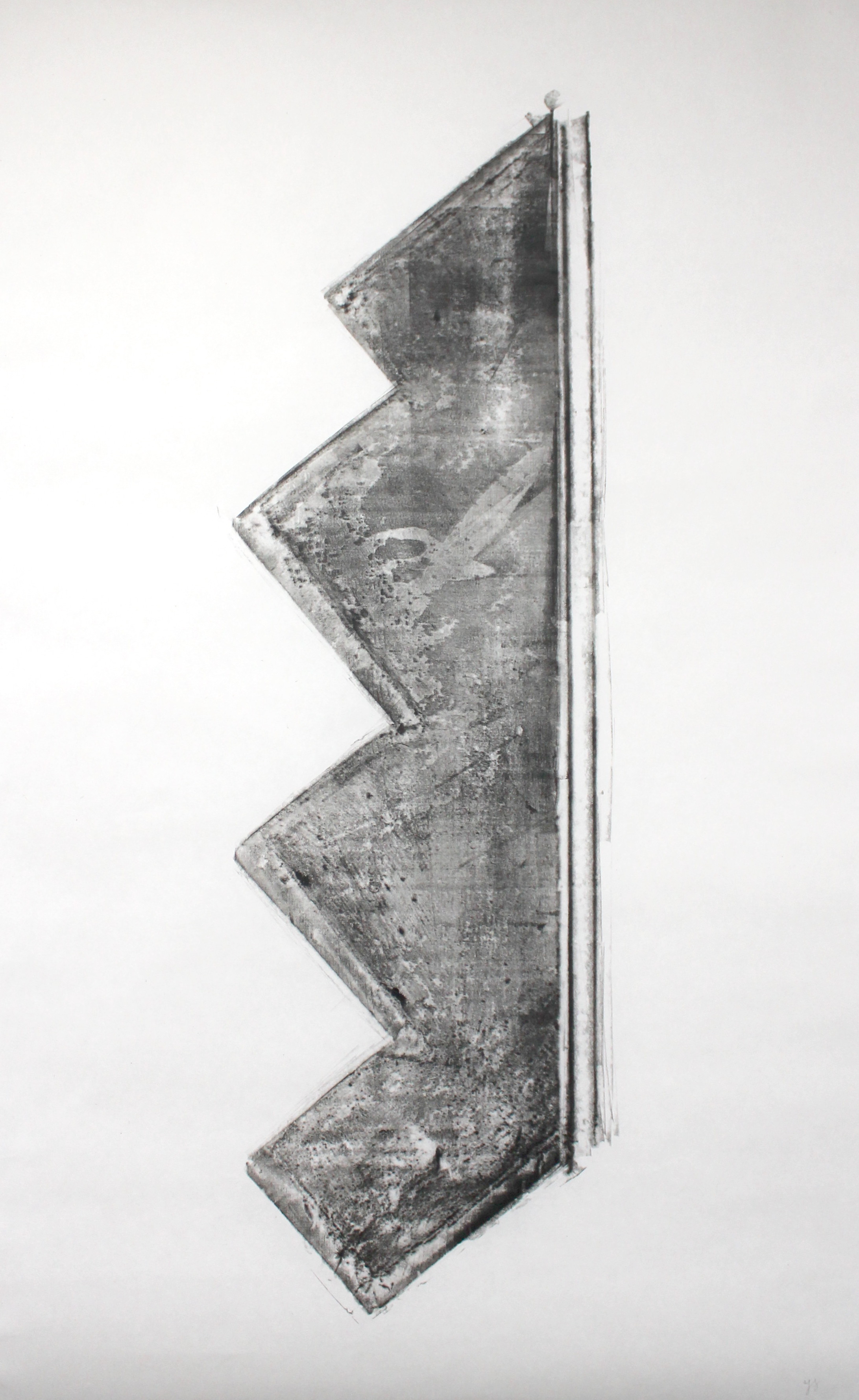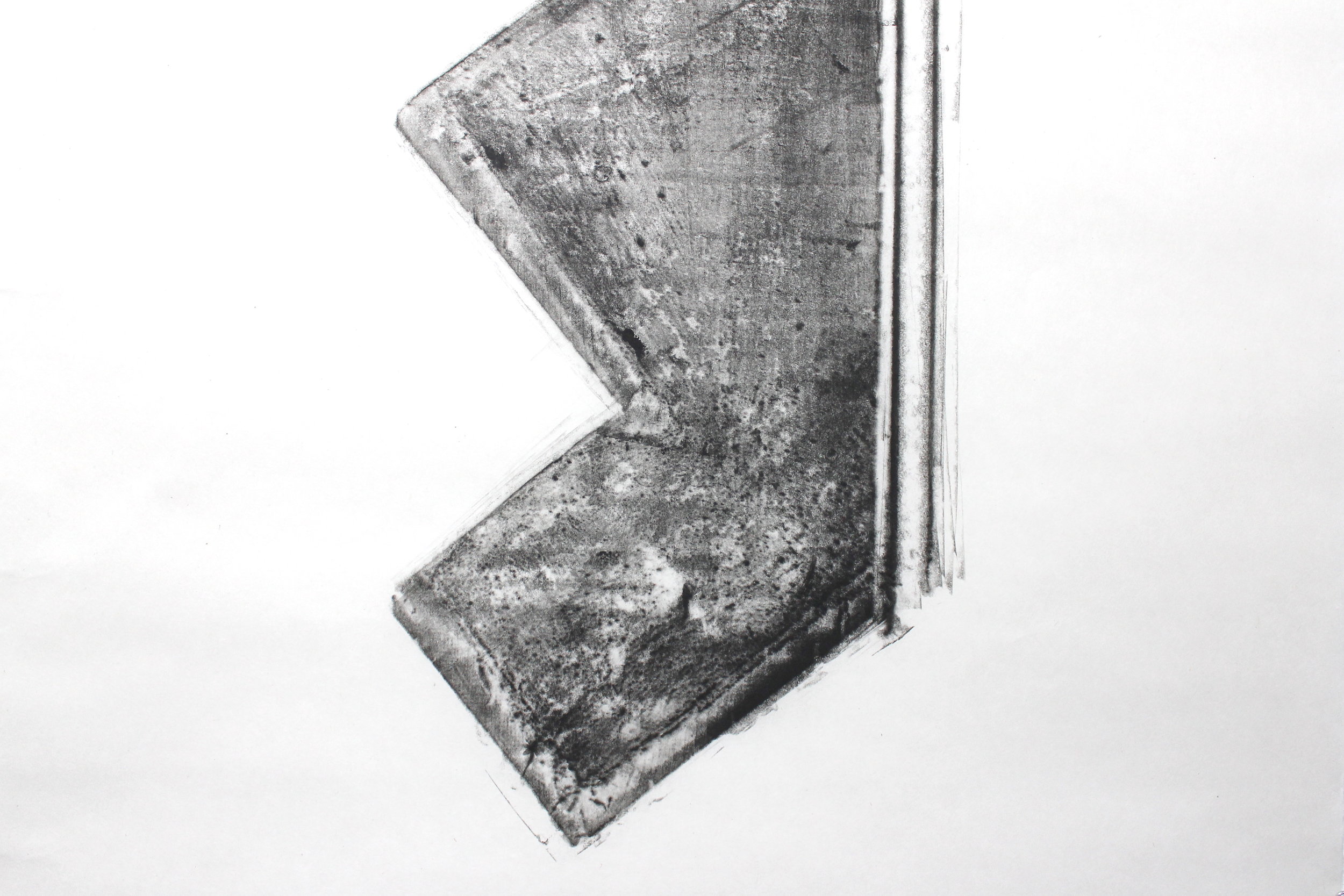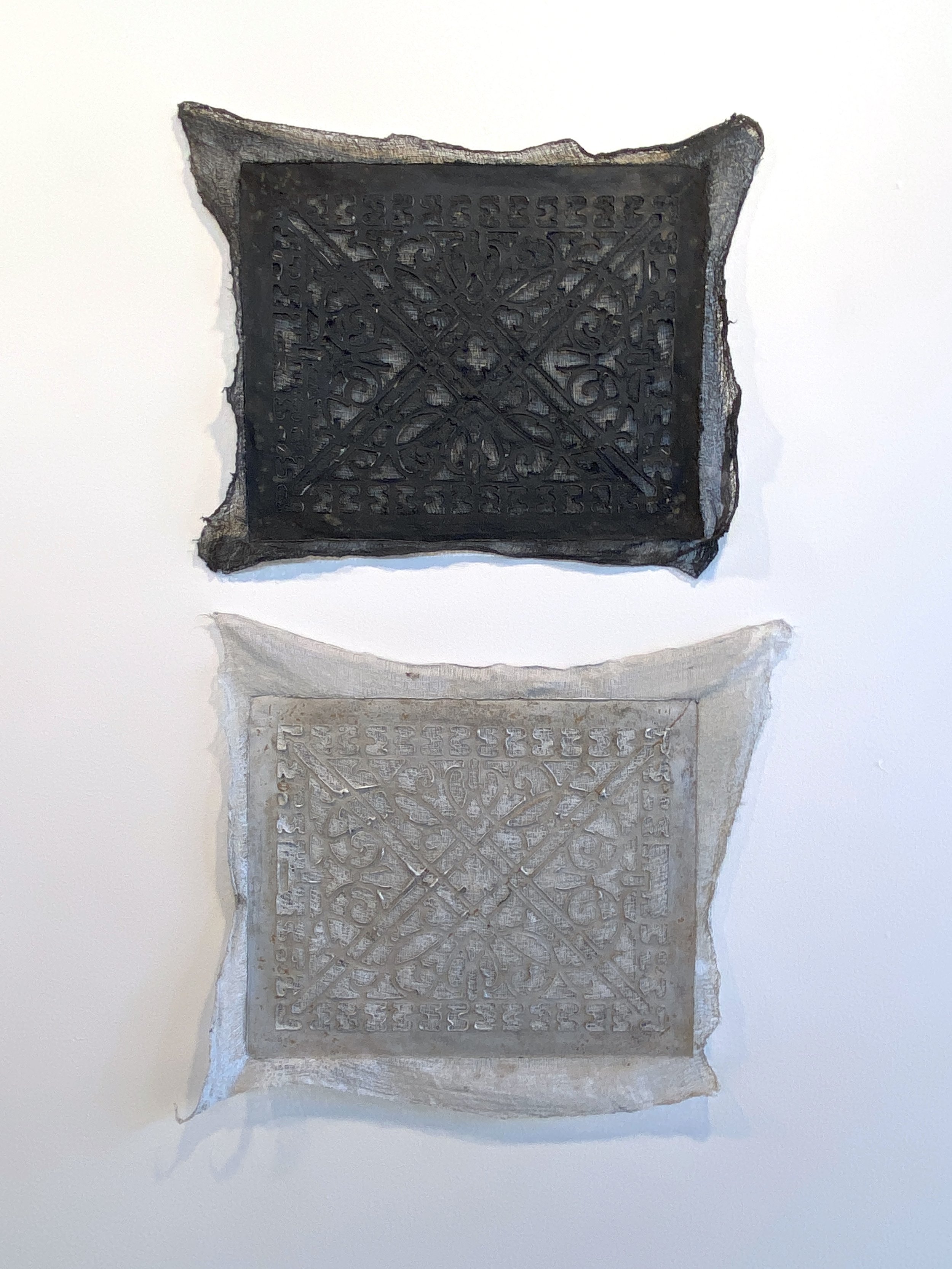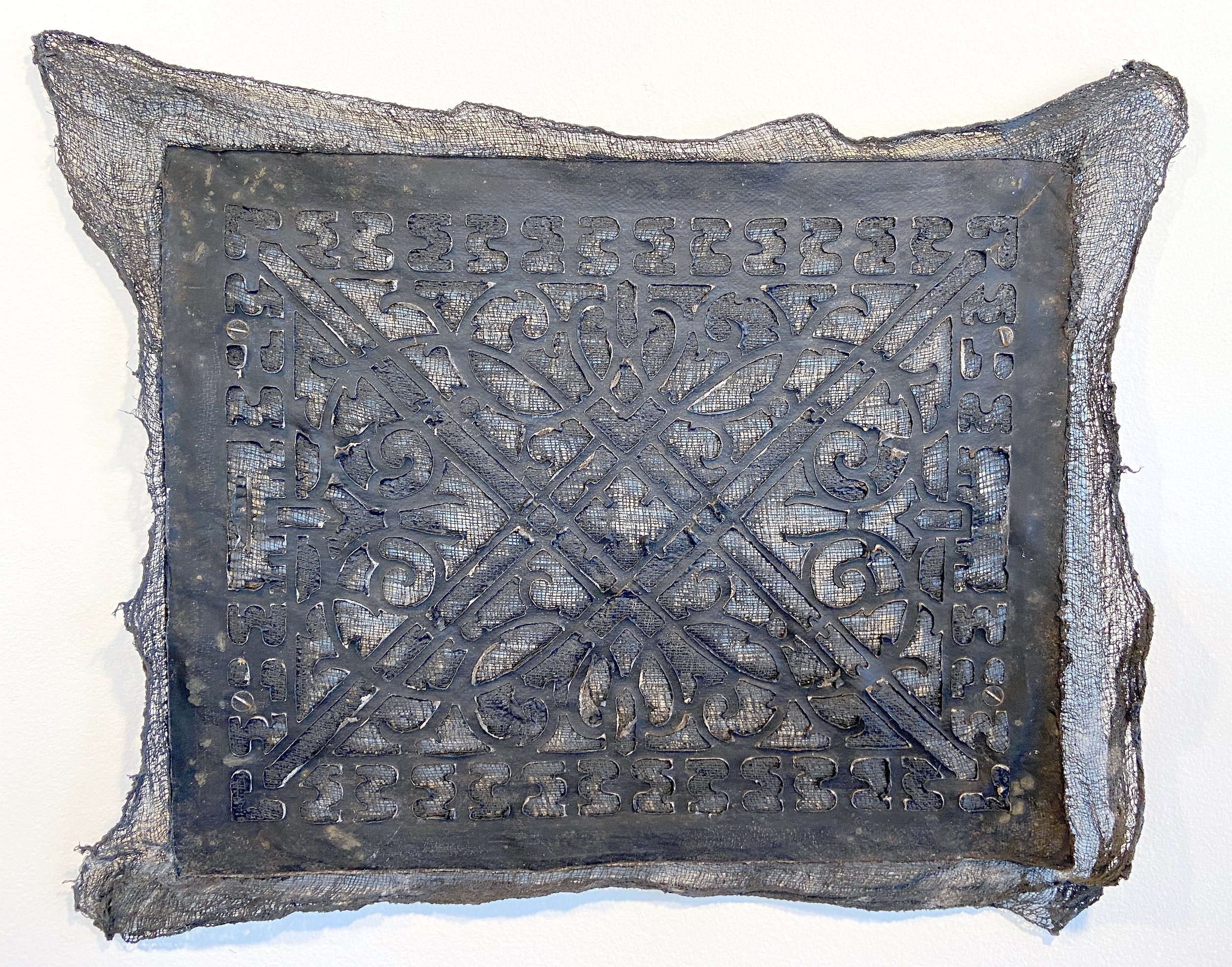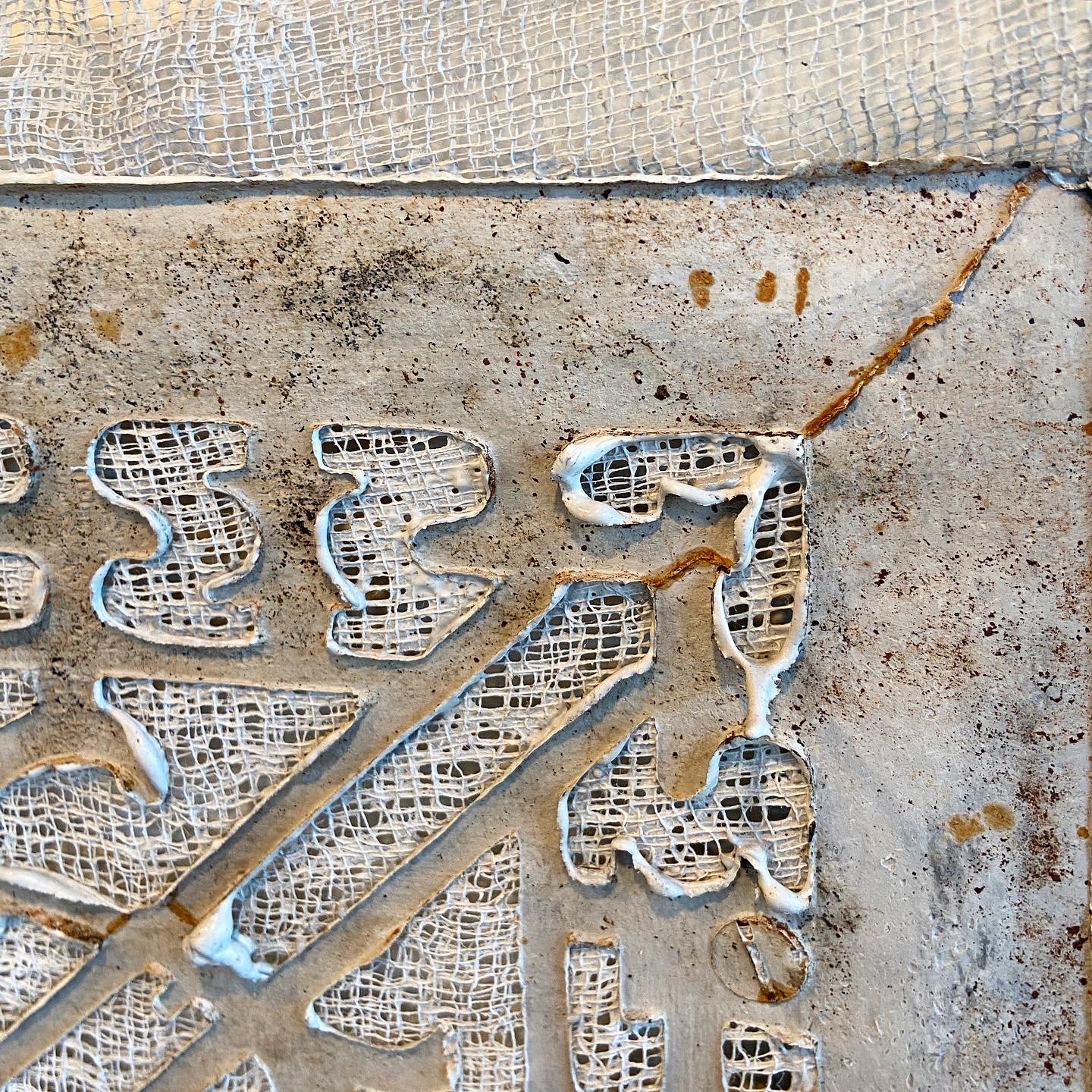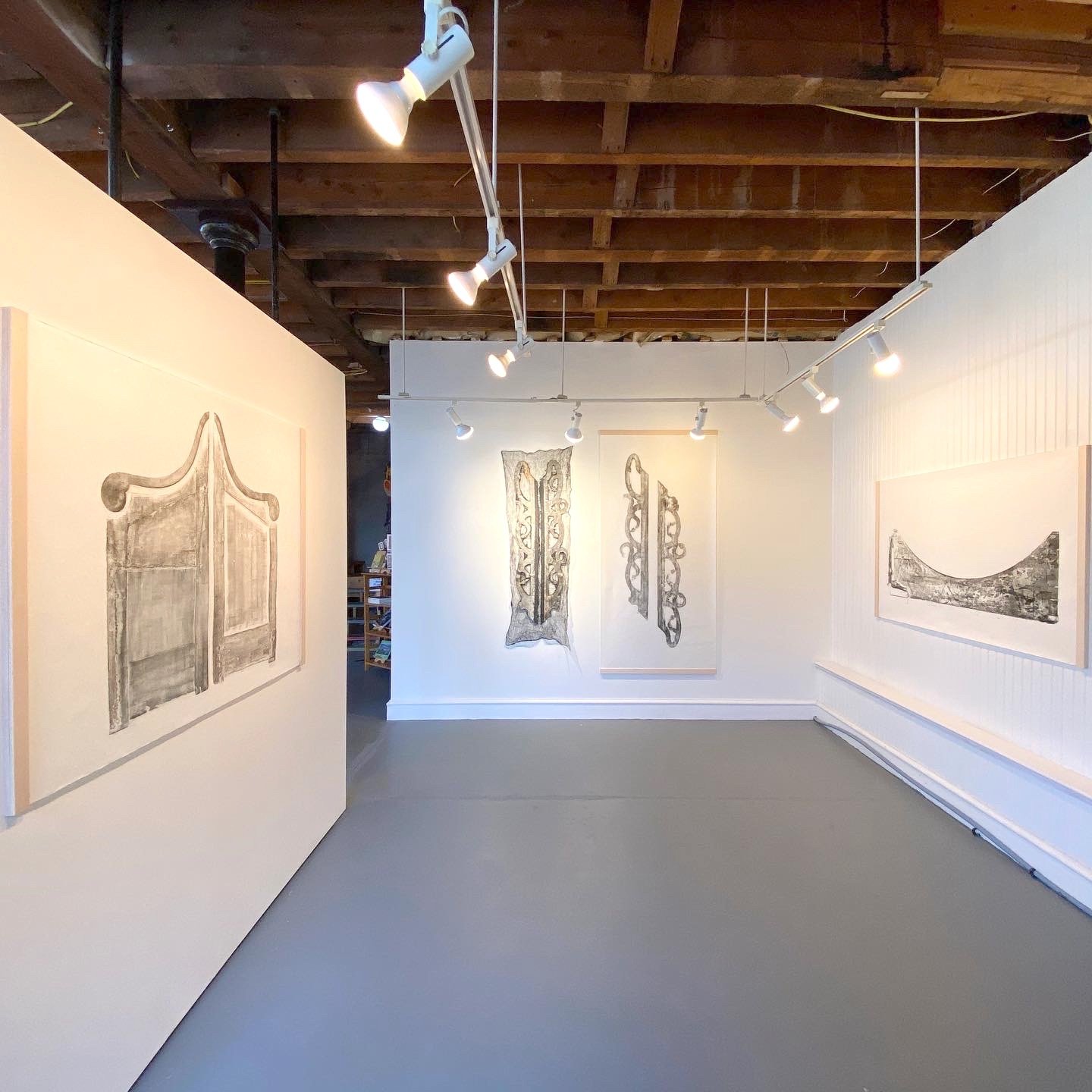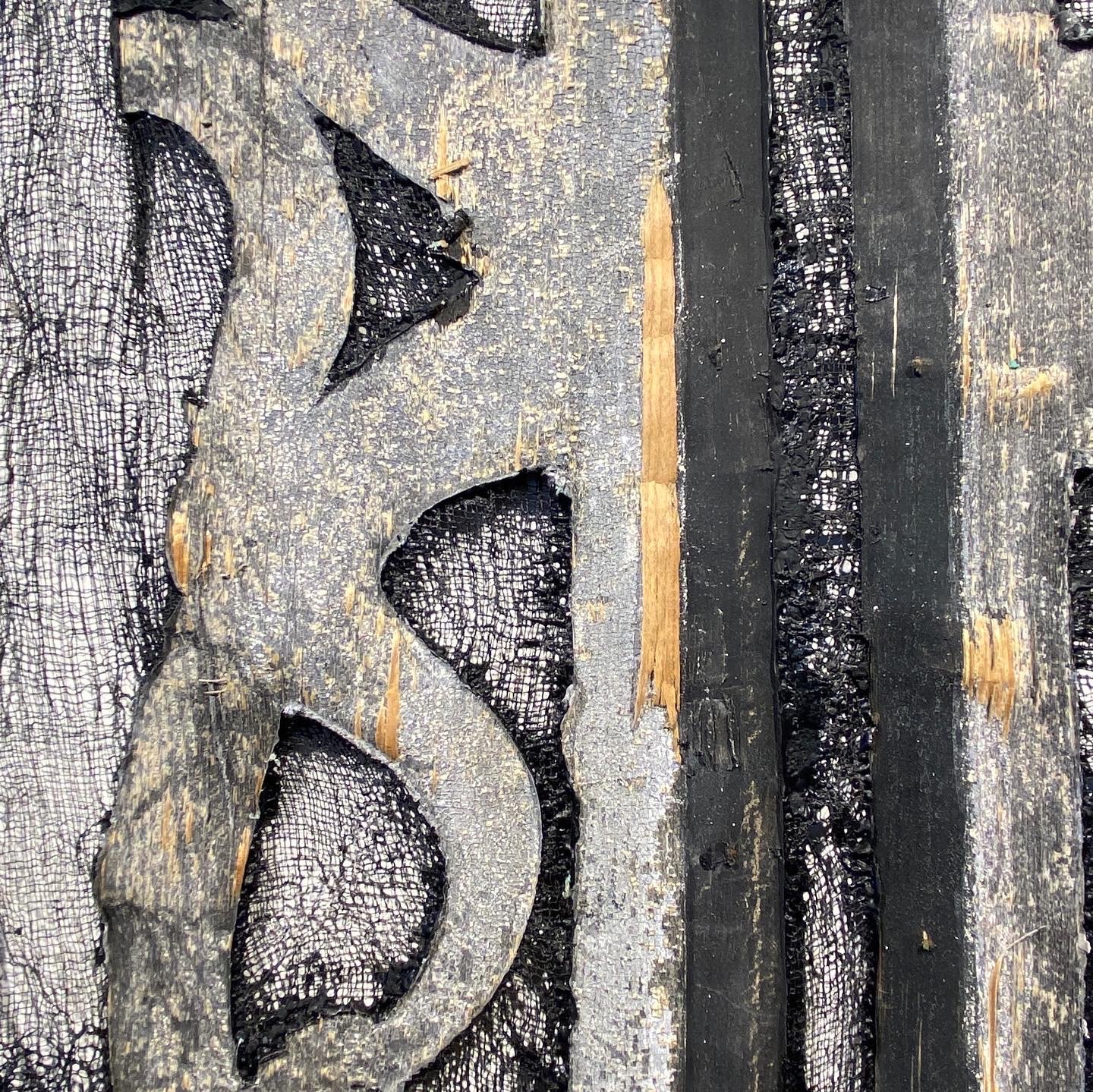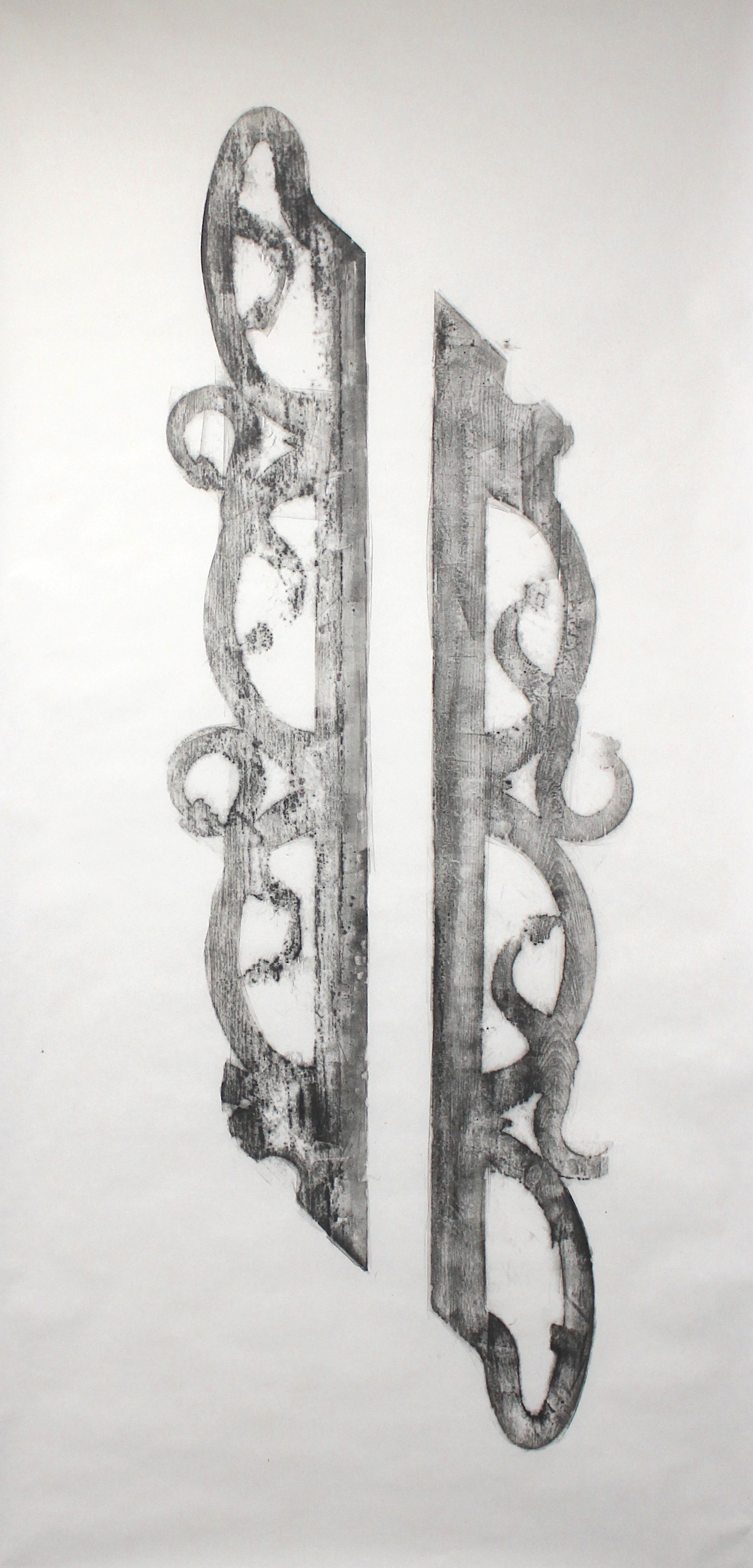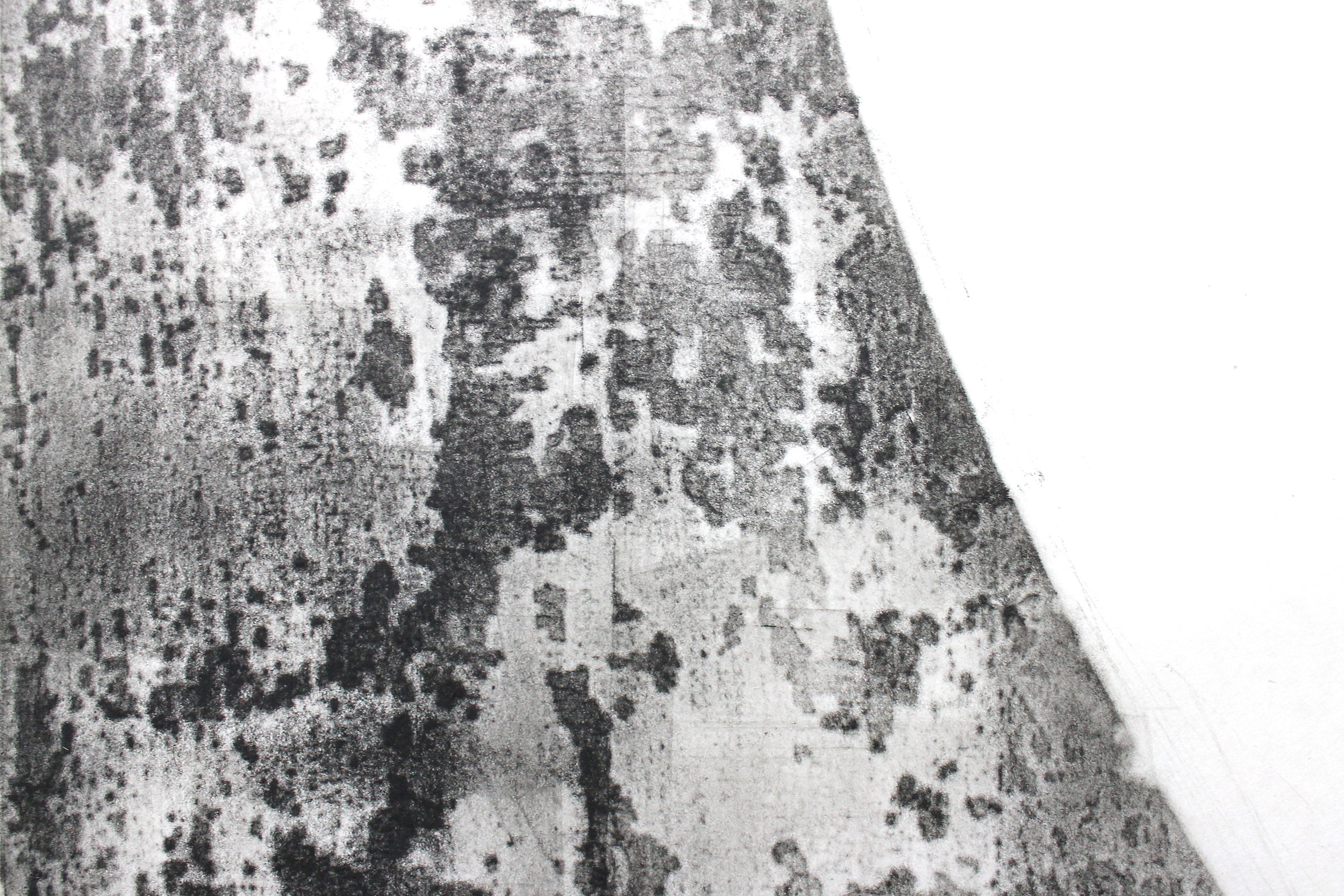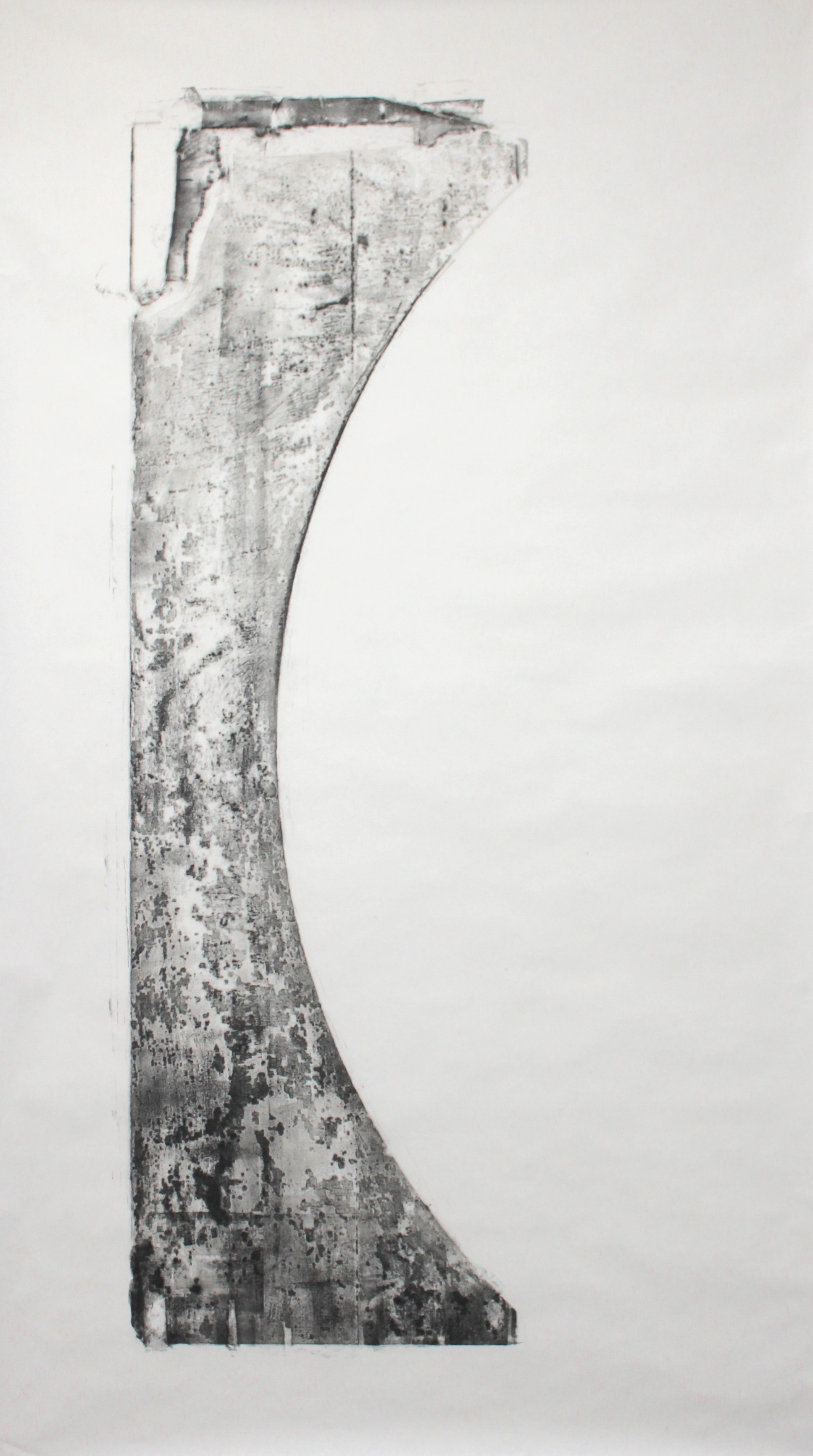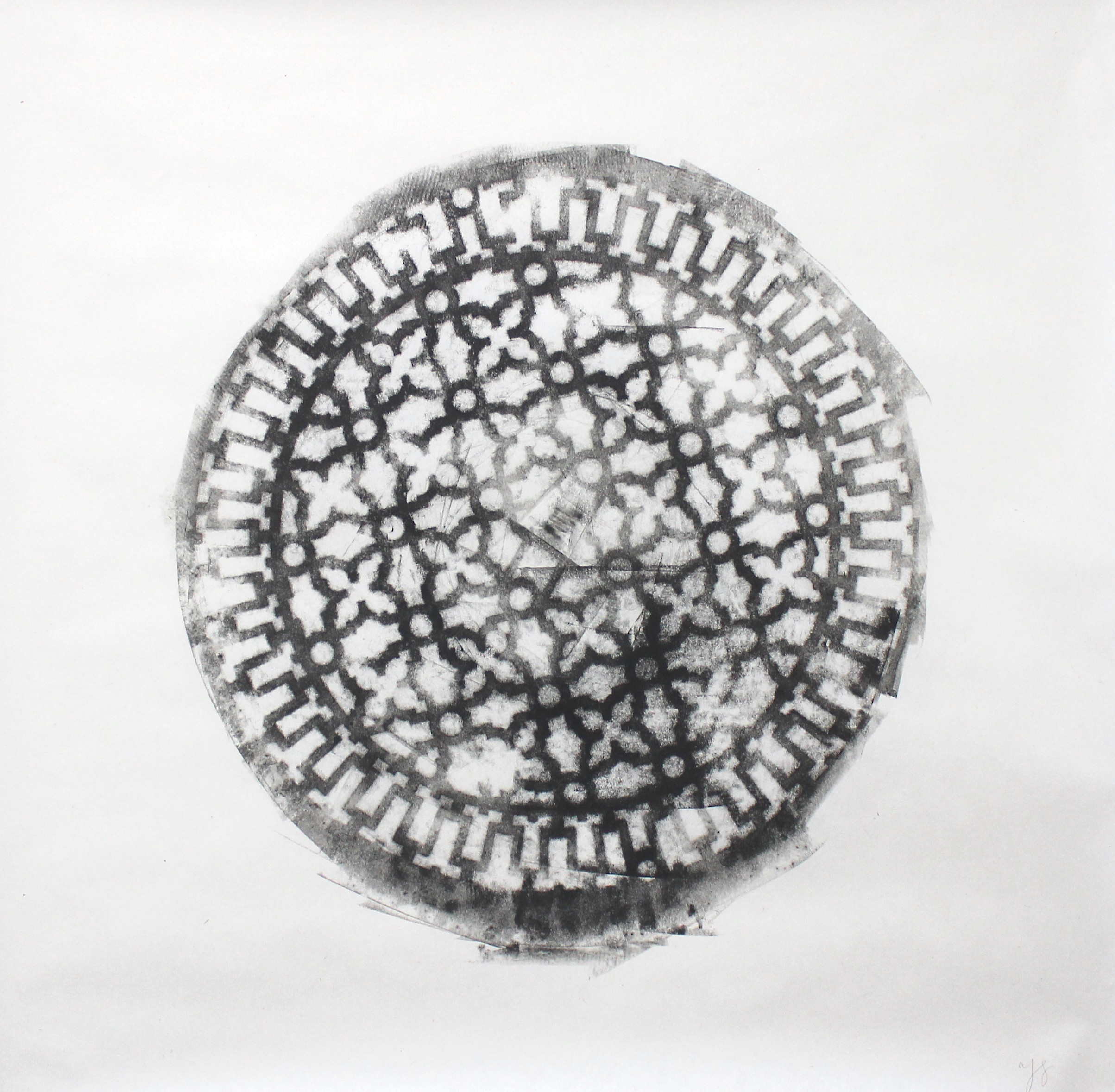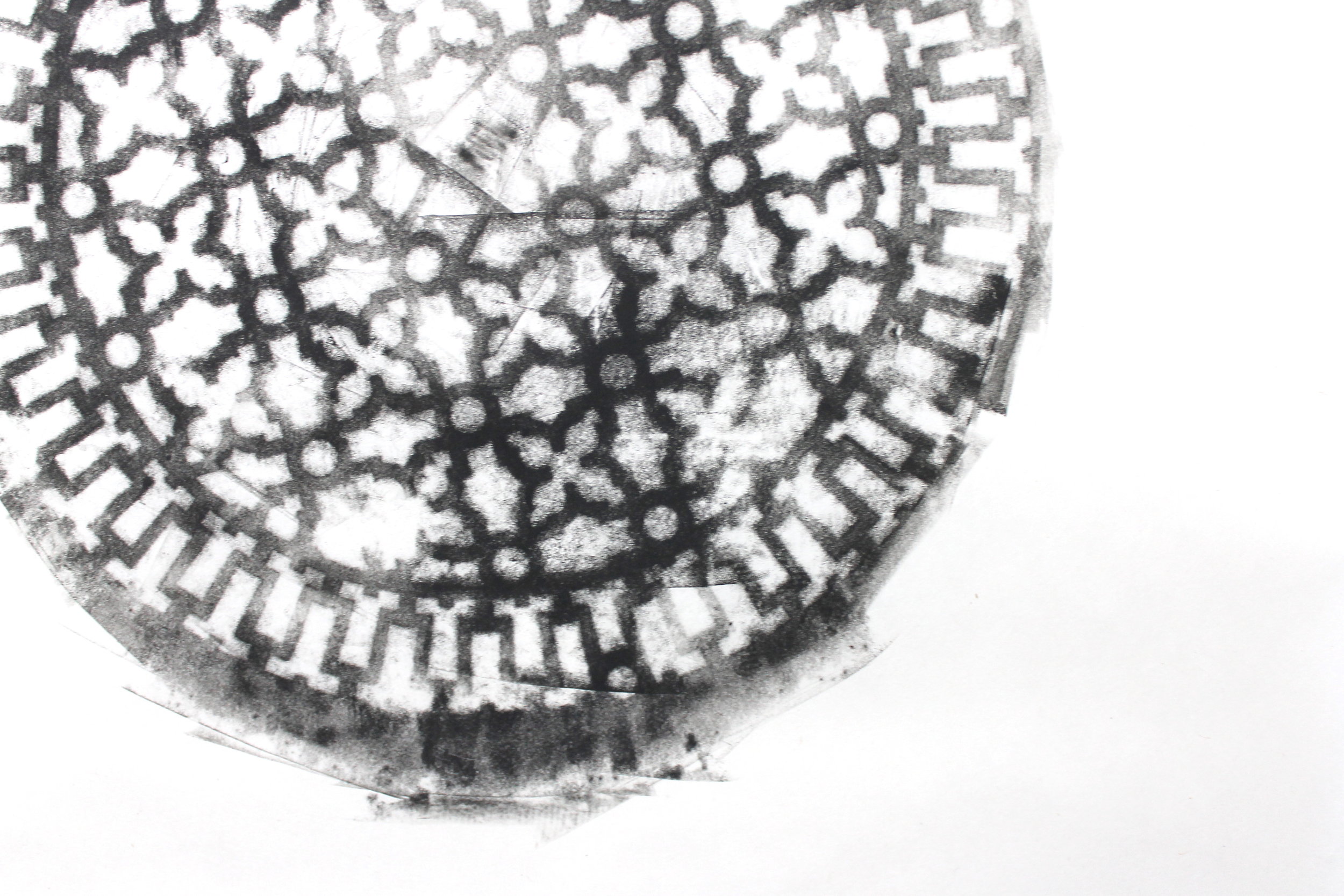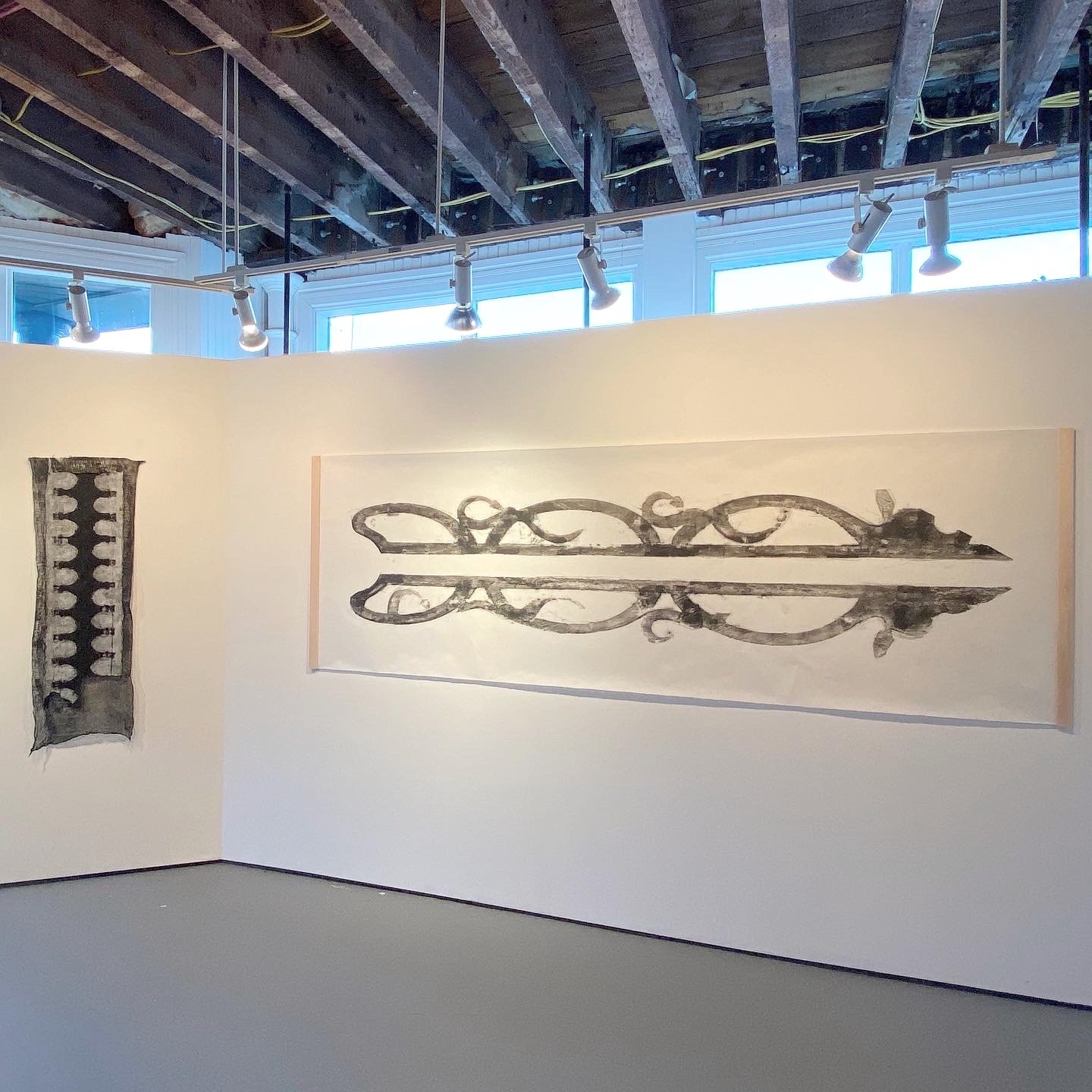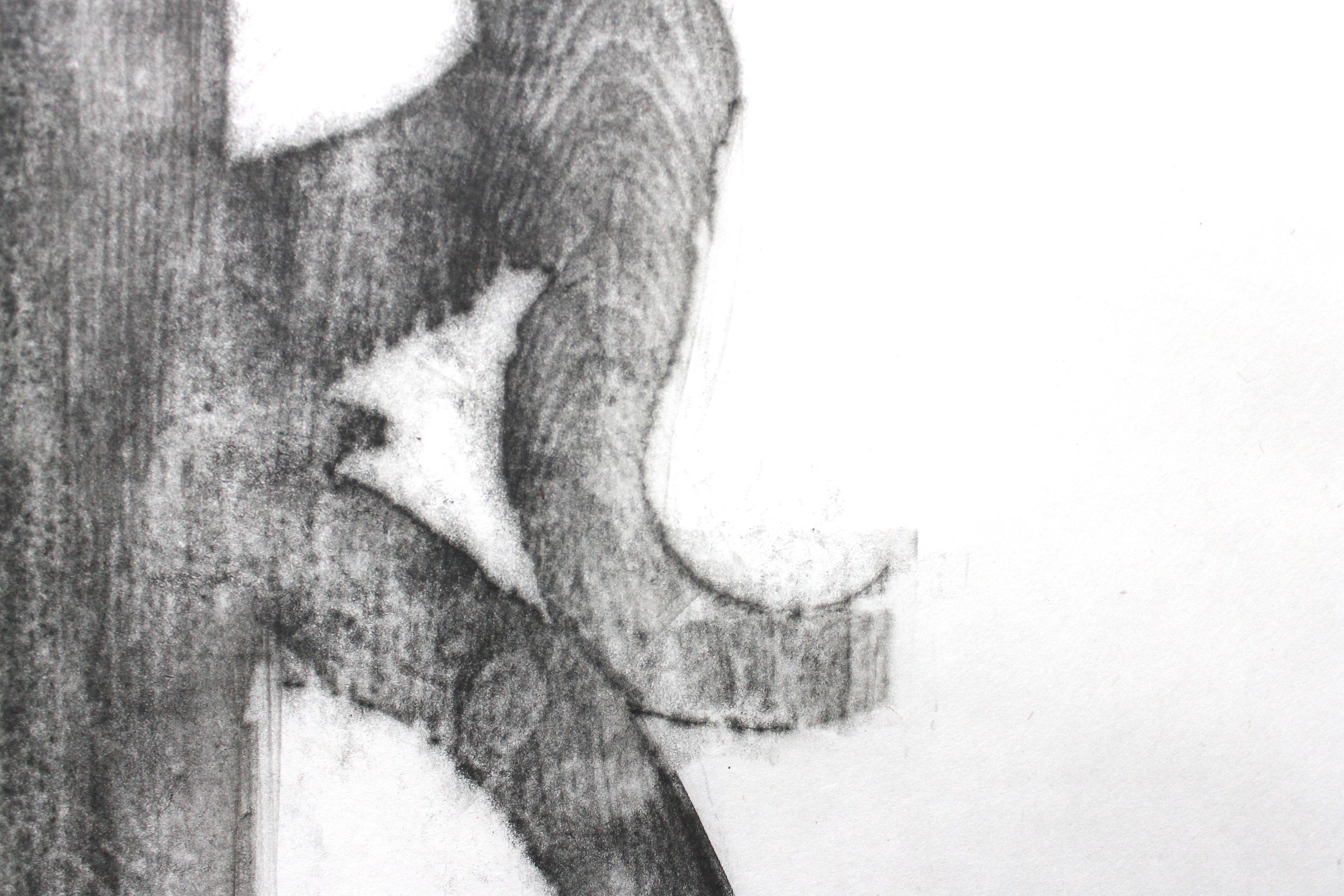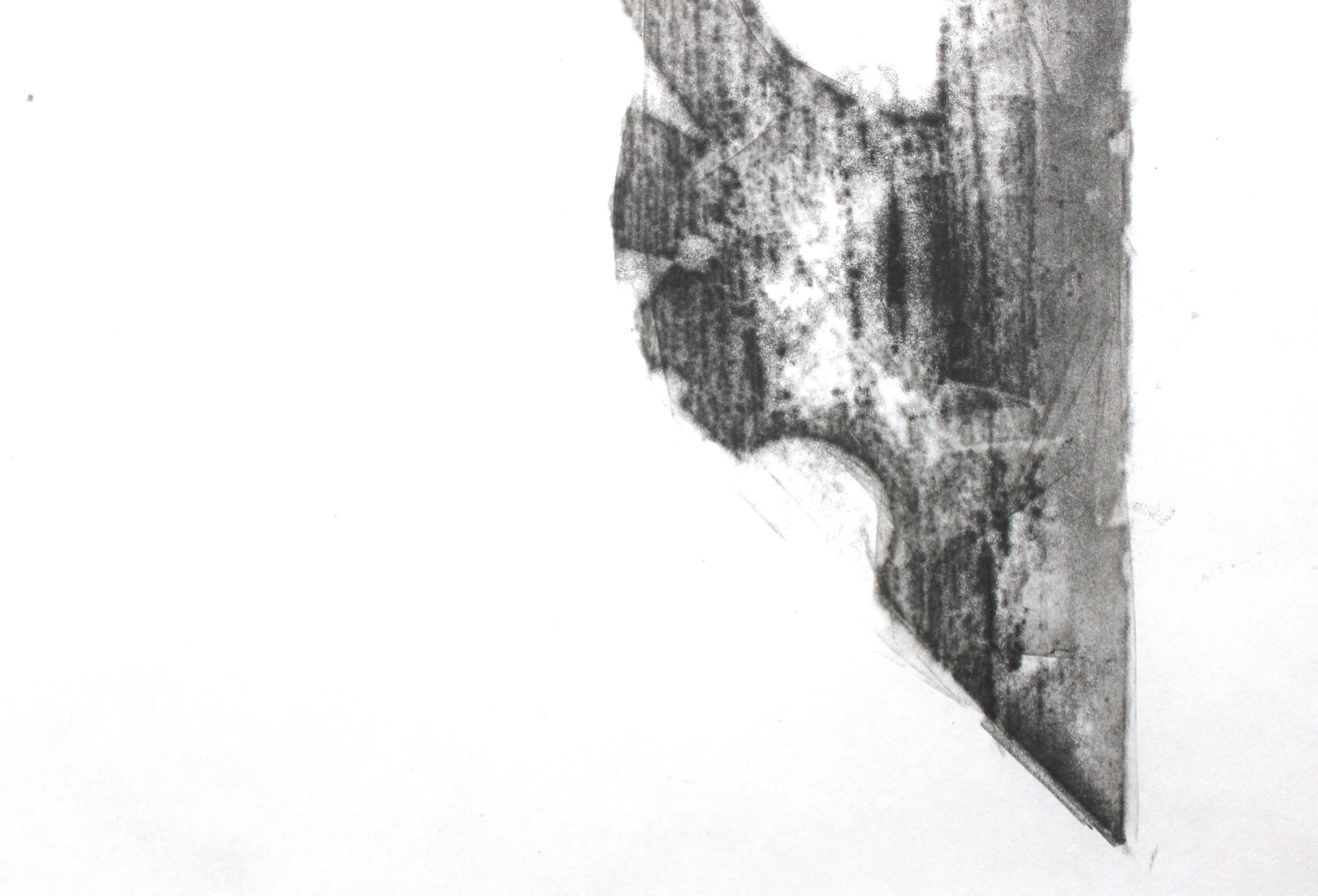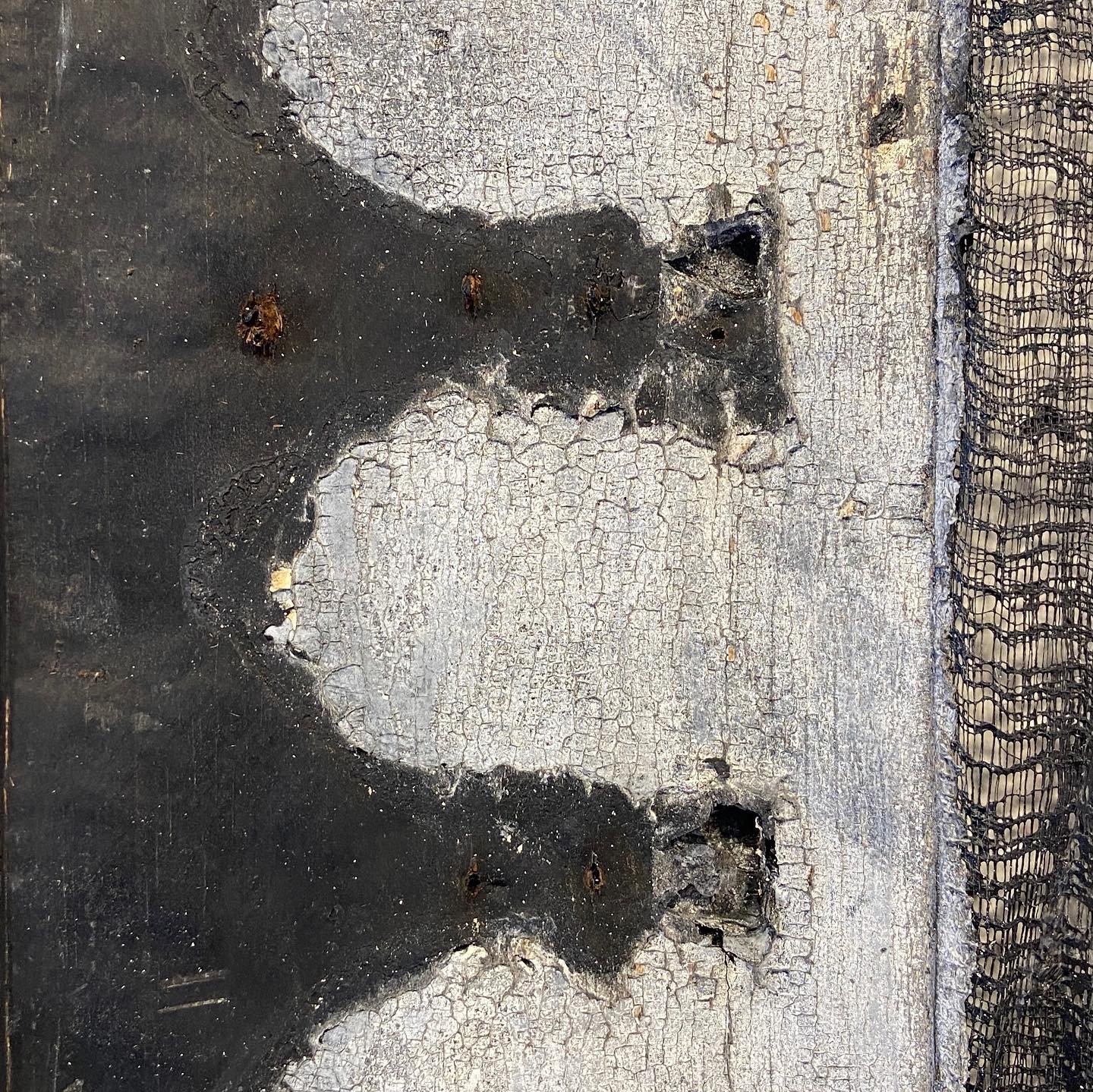SALVAGED SCRIPT
Frottage prints on mulberry paper and with latex impressions on cheesecloth
2017-2022
Created using architectural salvage items from the collection of the Tides Institute & Museum of Art, Salvage Script examines the architectural memory of Eastport, Maine, and surrounding communities. This exhibition uses indexical and site-based working methods from both printmaking and sculpture.
Using the technique of frottage, which is akin to creating a rubbing of a coin or leaf, washi paper was laid directly over top of the architectural items before being carefully rolled with ink using a printmaking brayer. This process, a temporary embrace of object, paper, and ink, makes visible the unique and worn textures embedded within these items — from raised wood grain to crackled paint. Among the objects represented are a stair stringer (Eastport), a keystone arch door frame (Eastport), decorative fascia (Pembroke) and metal grates found in the Free Will North Church (Eastport).
These prints reference the Japanese “fish printing” technique of Gyotaku, which records a fisherman’s catch using the documentation quality of printmaking. This work also considers the history of printmaking in Eastport, from the lithography studio which printed sardine can labels to the active TIMA Artist-in-Residence printshop.
The frottage prints are paired with latex rubber impressions that have also been created from similar objects to explore ideas of trace, repetition, and iteration. These impressions record a materiality authentic to the original object with remnants of wood, paint, and rust often embedded in the latex. Together, the prints and latex impressions explore the ideas of ‘relief’, ‘matrix’ and ‘impression’ — concepts often shared between printmaking, sculpture, and architecture.
The artist considers this collection of works as a form of asemic writing, a wordless open form of writing which holds no specific semantic content but refers to the calligraphic line found within written languages. This work is an ‘excerpt’ which suggests an incompleteness and points to the greater textures and histories found scribed within the locally constructed environment.
These printed and embossed artworks become recontextualized in the museum, a site which holds archival collections on paper — such as documents, and black and white photographs. This work seeks to preserve and build upon a tactile appreciation for the built heritage that encompasses us.
Thanks to Kristin McKinlay, Huge French and the Tides Institute and Museum of Art
